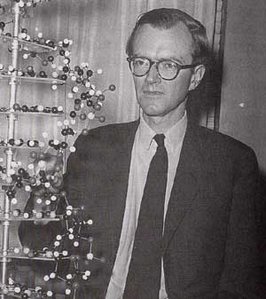Wilkins, Maurice (Society & Environment)

Wilkins, Maurice
| Topics: |
In 1962, Maurice Wilkins (1916–2004), James Watson (1928– ), and FrancisFrancis Crick (1916–2004) jointly received the Nobel Prize in medicine or physiology for their determination in 1953 of the structure of deoxyribonucleic acid (DNA).
Wilkins, a physicist, was born in New Zealand but educated at Cambridge. As a new Ph.D. he worked during World War II on the improvement of cathode-ray tube screens for use in radar and then was shipped out to the United States to work on the Manhattan Project. Like many other nuclear physicists he became disillusioned with his subject when it was applied to the creation of the atomic bomb; he turned instead to biophysics, working first at the University of St. Andrews in Scotland and then at King's College, London. It was Wilkins's idea to study DNA by X-ray crystallographic techniques, an important step towards the discovery of the double helix structure.
Later, Wilkins applied X-ray techniques to the structural determination of nerve cell membranes and of ribonucleic acid (RNA)—a molecule that is associated with chemical synthesis in the living cell—while rising in rank and responsibility at King's College.
Further Reading